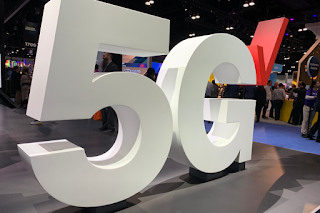Verizon achieved speeds of 4.3 Gbps in a trial of carrier aggregation using its newly acquired national footprint of C-band spectrum and its existing mmWave spectrum.
The lab trial aggregated 100 MHz of C-band spectrum together with 600 MHz of mmWave spectrum to provide greater efficiency for data sessions transmitting over the wireless network. The basebands and radios used were from Ericsson’s industry-leading Ericsson Radio System portfolio including the RAN Compute Baseband 6648, Antenna-Integrated Radio (AIR) 6449 for the C-band spectrum, and the Streetmacro 6701 for mmWave. The radios leverage massive Multiple Input Multiple Output (MIMO) architectures. The device used in this lab trial was a pre-market test device based on MediaTek’s M80 modem, which combines mmWave and sub-6 GHz 5G technologies onto a single chip.
“The depth of our spectrum portfolio, now the strongest in the industry, allows us to quickly expand access to a world-class 5G experience for our mobile and fixed broadband customers, providing high speeds, low latencies and enormous capacity,” said Adam Koeppe, Senior Vice President of Technology Planning at Verizon. “These lab trials demonstrate the exceptional network performance our customers will receive as we are able to integrate our newly acquired C-band spectrum with mmWave spectrum.”
The trial follows the recent announcement of new agreements with Verizon’s tower partners, Crown and SBA Communications, which provide for process improvements including standardizing and reducing forms and minimizing legal reviews. Additionally, Verizon has already started installation of C-band equipment from Ericsson and Samsung Electronics Co., Ltd to speed deployment of its 5G Ultra Wideband and fixed wireless broadband service. These combined efforts, along with ongoing lab trials to optimize 5G technology on C-band spectrum will allow Verizon to offer expanded mobility and broadband services to millions more consumers and businesses as soon as the spectrum is cleared.
In the first quarter of 2022, Verizon expects to put into service the new 5G C-band spectrum in the initial 46 markets and to provide 5G Ultra Wideband service to 100 million people. Over 2022 and 2023, coverage is expected to increase to more than 175 million people and by 2024 and beyond, when the remaining C-band spectrum is cleared, more than 250 million people are expected to have access to Verizon’s 5G Ultra Wideband service on C-band spectrum.
















